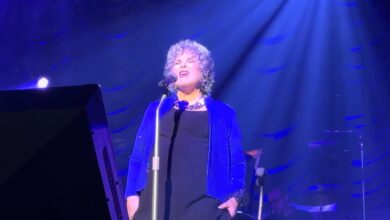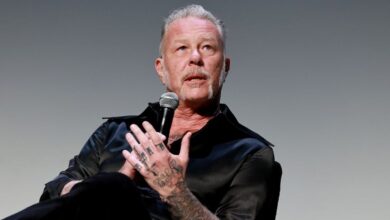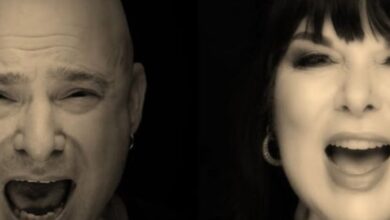Taylor Swift and Mick Jagger’s Surprise Nashville Duet Showcases the Limitless Reach of Pop Icon Status
If the people we surround ourselves with reflect who we are, then Taylor Swift made a bold statement on September 26, 2015, in Nashville. Before a sold-out audience at Bridgestone Arena, she astonished 15,000 fans by bringing none other than Mick Jagger onstage. The moment erupted into cheers as the Rolling Stones legend joined Swift for a fiery duet of “(I Can’t Get No) Satisfaction.” The crowd’s reaction, paired with the flood of buzz on social media afterward, confirmed that this wasn’t merely a collaboration—it was a cultural milestone, bridging eras and underscoring Swift’s immense influence in today’s musical landscape.
Swift’s transformation from a small-town country sensation to a global pop powerhouse didn’t happen overnight. Raised in Tennessee after being born in Pennsylvania, she broke into the Nashville scene with heart-tugging songs about growing pains and lost love. But as her career evolved, Swift held onto her narrative depth while expanding into a more expansive pop realm—fusing confessional lyrics, high-concept visuals, and fearless vulnerability into a phenomenon that transcended genre boundaries.
Inviting Mick Jagger onstage wasn’t a gimmick—it was a bold artistic statement. Here stood Swift, not yet 30, bringing out one of the most legendary figures in rock history to share her stage in her home state. Whether Jagger made the trip just for this show or happened to be nearby, the effect was seismic. Nashville had only recently seen the Stones at LP Field, and now, as if summoned by Swift’s star power alone, Jagger appeared once more—this time in a pop kingdom built entirely on her terms.
The performance was a centerpiece of Swift’s 1989 tour, a production that redefined arena concerts. She kicked off the night with “Welcome to New York,” appearing in oversized shades and a shimmering jacket, flanked by dancers styled like they stepped out of a cyberpunk dream. Towering LED visuals of Manhattan bathed the stage in vintage noir glitz, creating a world where the city became a stand-in for reinvention, heartache, and transformation. It wasn’t just a song—it was a cinematic opening scene to a personal saga.
As the show moved into “New Romantics,” Swift casually discarded her jacket mid-performance, revealing a form-fitting black halter top that sent the audience into a frenzy. Each wardrobe change marked a new chapter in the night’s emotional arc. Every visual element—costume, choreography, lighting—was carefully designed to reflect the shifting tones of her storytelling. Swift wasn’t simply singing—she was embodying the many versions of herself that have evolved through her music.
What truly separates Swift from her peers is her remarkable ability to create intimacy on the largest stages. The piercing scream that greeted her arrival wasn’t only fan adoration—it was the sound of shared experience. She recognized fans by name from social media. Her father, mingling with concertgoers before the show, was treated like a celebrity in his own right. Swift’s unique gift lies in making every listener feel included, seen, and remembered.
Throughout the concert, videos featuring members of Swift’s inner circle played between songs. Appearances by Lena Dunham, Karlie Kloss, Selena Gomez, and Lily Aldridge emphasized the themes of friendship and empowerment. Unlike other celebrity entourages, Swift’s crew wasn’t portrayed as an elite circle, but as an aspirational extension of the fan’s world—where loyalty and support mattered more than glitz. It was less about exclusivity and more about possibility, woven into every beat of the performance.
One of the most poignant moments of the night came when Swift slowed things down to perform “Fifteen” acoustically. She dedicated the song to her childhood best friend Abigail, and by referencing their shared roots at Hendersonville High, she reminded the crowd of where her journey began. Even at the height of her fame, Swift grounded her message in authenticity—turning a massive arena into what felt like a heartfelt living room confession.
While Jagger’s presence added legendary weight to the show, it didn’t overshadow Swift—it enhanced her. His appearance became a thunderous punctuation mark in a night already rich with emotion and spectacle. The performance proved that Swift isn’t confined by genre labels or generational divides. Her respect for legacy acts like the Rolling Stones shows her musical curiosity runs deep—and her willingness to collaborate speaks to her understanding that music’s greatest strength is its ability to unite, not divide.
Mid-show, Swift paused to address the audience with an emotional reflection on fame and identity. Fighting tears, she spoke candidly about criticism and encouraged fans to hold onto their self-worth. “If anyone tells you you are uncool, they’re wrong,” she told the crowd. In that brief pause, Swift wasn’t just a global star—she was a voice for the young, the misunderstood, and anyone still searching for who they are.
Tickets for the night were pricey—some reaching as high as $2,000 on secondary markets—but the arena was filled with far more than status. Families, young teens, longtime fans, and first-timers came together under one roof for a shared experience. From her lyrics to her speeches, Swift tapped into a collective emotional current that turned a stadium show into something deeply personal and human.
That’s the essence of Taylor Swift’s enduring appeal. Her concerts are more than just performances; they’re shared stories brought to life. Whether she’s dancing alongside supermodels, standing beside a rock icon, or singing about adolescent heartbreak, she creates moments that are both sweeping and soulfully intimate.
The Nashville concert—and Jagger’s surprise cameo—wasn’t simply a headline-grabbing moment. It was a symbolic representation of Swift’s continued role as a cultural connector, bridging genres, eras, and emotions. It was a reminder that music at its highest power doesn’t just entertain—it invites us in, gives us something to hold onto, and lets us feel part of something greater.





